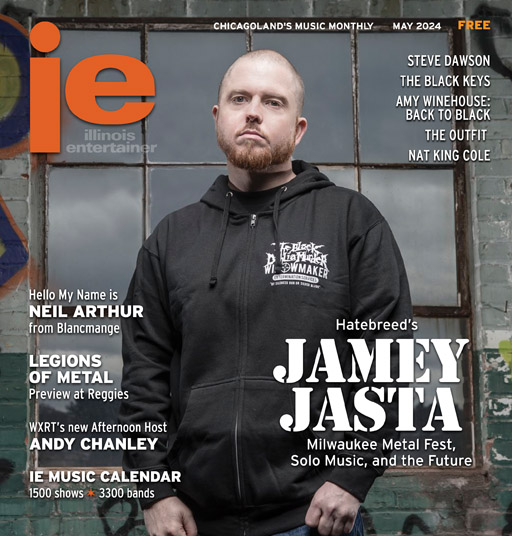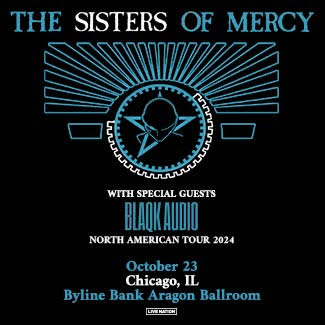The Band Revisited
Usually artists are long dead and have gone onto some mythological hierarchy in music history before they get the sort of acclaim (and downright adulation) that The Band has continuously received throughout its long and dramatic career. Emerging in 1958 from the dingy R&B and rock clubs of Canada as The Hawks (backing band for Knuke-Rock pioneer, Ronnie Hawkins), The Band would soon reach legendary status as both Bob Dylan’s backing band during the mid-1960s and later as an individual entity.

By the time the group settled in Woodstock, NY in 1968 to write and record Music From Big Pink, the first official Band LP, everyone from Time and Rolling Stone to Eric Clapton and George Harrison were singing its musical praises.
And although The Band never approached the commercial success of The Beatles or The Stones, it wrote and recorded some of the most covered songs of all time, including “The Night They Drove Old Dixie Down” and “The Weight.”
The Band — A Musical History celebrates the music and legacy of the group that has made some of the most enduring and influential rock music of all time. It is a five-CD collection, packaged inside a full-color, hard cover coffee-table size book with a DVD. Released by the band’s longtime label, Capitol-EMI, this extensive boxed set is designed to replace several other single, two, and three-CD collections issued by Capitol since 1989.
“This is, by far, the most comprehensive, in-depth, and beautifully put together collection of The Band’s musical journey,” says Robbie Robertson, who led The Band from its earliest days backing Ronnie Hawkins, until its initial demise in November 1976. Robertson, who did not participate in the group’s 1990s reunion albums and tours, has worked as a solo artist, film music supervisor, and Geffen Records A&R exec for the last 30 years, before returning to the music of The Band as the executive producer of this project.
Knowing the music of The Band needed something of this magnitude to be properly presented as a true historical testament, Robertson says he is “thrilled” with the end result and the response it has received from critics and fans, alike.
The collection covers the group’s recorded history from 1963 through 1976, on 111 audio and video tracks, more than 37 of them previously unreleased. There are recordings made with both Hawkins and Dylan, and a magnificent collection of rare video clips that include unreleased live performances, studio jams, and three songs from a 1976 “Saturday Night Live” telecast. The book features liner notes/text from Grammy Award winning music historian, Rob Bowman, and features countless amazing photographs, many of which had never been published.
A Musical History is remarkable on several levels, but mainly because the music within is so incredibly diverse and innovative. From the early blues/rock riffs of “Who Do You Love” (recorded with Hawkins) through the stomping pulse of “Highway 61” (captured with Dylan at Madison Square Garden in 1964) to the gentle retrospection of “Arcadian Driftwood” from its second-to-last studio album, the set chronicles not only an artistic institution, but also perhaps, the finest collection of songs recorded by a single group since The Beatles.
“I never felt like I was trying to make a big point about any [thing],” says Robertson, who wrote a majority of The Band’s material. “When I had written songs over the years, it was always what I would think at the time,” he laughs. “I wish it was really heady and deep, you know, but, it is something that just lives inside me and when I write, it just comes out.”
The group’s classic lineup included Robertson on guitar and lead vocals; drummer/multi-instrumentalist Levon Helm; bassist/vocalist Rick Danko; pianist Richard Manuel; and keyboardist/accordionist Garth Hudson. All but Manuel would release a solo album, with Robertson focusing mostly on film soundtrack work since leaving the group.
“Well, I feel really fortunate that I was in The Band,” he says. “When I started playing with Ronnie Hawkins, I was 16-years old and within two years from that, the guys that eventually became The Band, were part of Levon & The Hawks, which was our initial name before The Band. And to have happened to these kind of talented guys who all came together musically, was really a blessing, and I’m so grateful for that.
“Our musical experience . . . we were together for several years before we made Music From Big Pink. So, we had a lot of opportunity at the Woodshed [their Woodstock studio] and to really hone our musicality and dig in deep into our inspirations, and pick up all these musicalities along the side of the road and in the streets of just playing the Chitlin circuit and all around. And then when it came time for us to make our first record, I think all of those influences came out and it made for such an interesting combination of musicalities.”
He adds: “There was such talent. I mean, it was a group that everybody really held up their own end. There was no like, ‘Well, it’s these two guys and the other guys are lucky to have the ride.'”
After recording and touring in 1964 and 1965 as Levon & The Hawks, Robertson met and befriended Bob Dylan in New York City. Within weeks, Dylan and the group (by now dubbed The Band) were recording and touring while the enigmatic rock poet created his most enduring albums, including Blonde On Blonde.
It was The Band that backed Dylan through his legendary 1965-’66 U.K./European tour, where they were booed night after night for abandoning Dylan’s folk roots.
“The whole early experience with Bob was like a musical revolution! This combining folk music and electric music could be that upsetting for some people. It’s like, ‘Don’t you people have anything really to do? Are you really that concerned about this?’ And we played all over the world; we toured all over North America, Europe, Australia, and we got booed every place we played! Everywhere.”
“I have to give [Dylan] points for courage because it would be very easy to say, ‘O.K. enough of that,’ but he really stood by his guns on it, so, I really commend him for all of us. We all had to put up with it. It caused Levon to leave the band from 1966 through part of 1967. We were the bad guys in the situation. We were the people who built amplifiers that was pissing everybody off.”
“It was disheartening, but we kind of understood that this was one of those things that people were going to get over — we were hoping they were going to get over — and they did get over it. It was all accepted like it was always cool, in the end. It was a very strange thing in popular music history, actually, what happened then.
Robertson and the group settled in Woodstock where Dylan and manager Albert Grossman lived. While pondering another go-round with Dylan, they regrouped in a large pink house, where they wrote and recorded the now legendary Music From Big Pink album. By the time it was released in 1968, critics and industry insiders were touting them as one of the most important music acts in the world . . .
— Bruce Pilato
For the rest of the story, pick up the December issue of Illinois Entertainer.











